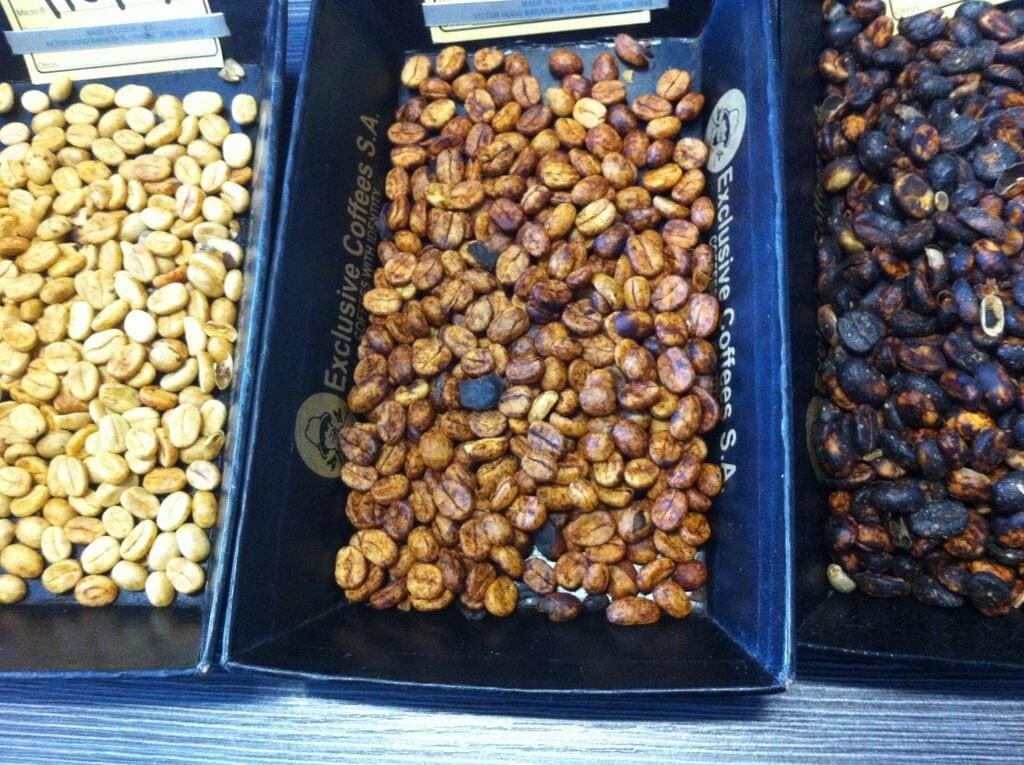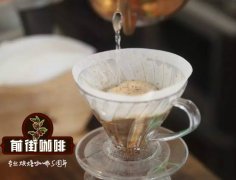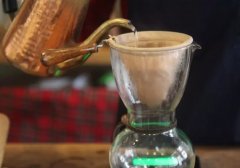What you should know about coffee honey treatment. What does honey treatment mean to us?
Professional coffee knowledge exchange more coffee bean information please follow the coffee workshop (Wechat official account cafe_style)
People who understand coffee all know that there are sun and water washing treatments, but what is the honey treatment that has sprung up in recent years? Have you ever wondered what coffee honey treatment is? Is this coffee better than other treatments you are used to drinking?
This article takes you to explore what honey treatment is, what are the characteristics of honey treatment, and what is the different significance of honey treatment for baristas and bakers.
Why is it called honey treatment?
There are three main ways to treat coffee: sun exposure, water washing and honey treatment. The sun drying method is to directly expose the coffee cherries before removing the shell and pectin layer; the water washing method is to screen the coffee pulp before exposure and ferment to remove the pectin layer; the honey treatment law is between the sun method and the water washing method: the pectin layer is directly retained and exposed after the coffee pulp is screened.
Then you will ask where is Mi?
The word honey treatment makes many people think that coffee is treated with honey, or that coffee tastes as sweet as honey, but in fact it is not either of these two explanations. The meaning of honey treatment comes from the sticky pectin layer of coffee beans before exposure, which feels as sticky as honey; when the coffee pulp is separated from the coffee beans, the outer coated pectin layer is exposed to absorb moisture in the air and make the pectin layer sticky.

When the coffee is screened, the pectin layer will remain on the outside of the coffee bean.
Why is honey treatment popular with coffee farmers?
At first, some people saw that this treatment could continuously improve the quality of their coffee beans, and it originated in Costa Rica, and this treatment is now ramming.
So why did coffee farmers in Costa Rica plan to treat it with honey in the first place? When coffee farmers want to improve the quality or price of their coffee, they have three choices: change the species of coffee, change the altitude of planting, and change the method of treatment. Just like most people who brew coffee, they will want to use relatively simple ways, such as adjusting the grinding scale and the amount of powder, and then adjusting the amount of water, pressure and temperature of the coffee machine. Most coffee farmers also want to change the treatment method first. Then they will consider planting new tree species or moving the manor, which requires investment of time and money.
Honey treatment is time-consuming and the construction method is exquisite.
Honey treatment is not simple, it takes a long time and must be handled carefully. What are the steps involved in honey processing?
First of all, coffee farmers should select ripe coffee cherries from the coffee tree, and then screen out the outer pulp, as mentioned earlier to retain the pectin layer outside the coffee beans. The pectin layer retains a high proportion of sugar and acid, which are the key to honey treatment.
The following steps are the most complex and exquisite part of honey treatment: exposure. The time must be mastered well, and the length of time is the key. If the exposure time is too short, it is impossible to convert the substance of the pectin layer into the coffee beans, and the time cannot be too long, and the action must be fast to avoid mildew beans caused by internal fermentation.
So how do you strike a balance? Put the beans on the sun scaffolding or cement floor and turn the beans several times per hour for the first few days until they reach the desired moisture content, a step that usually takes 6-10 hours. You need to turn it at least once a day for the next 6-8 days. It takes a lot of time, huh? The reason why honey treatment is so time-consuming is that beans absorb moisture from the air every night, so that it takes more time to expose themselves the next day.
When the coffee is exposed, it is almost as dry and roasted as any other treatment.

Honey-treated coffee is being exposed on the cement floor.
Why is honey treatment so beautiful?
When honey treatment is so difficult and time-consuming, you may wonder if it's really worth it.
There's no doubt it's worth it.
Honey-treated coffee generally has a great balance of sweetness and acidity, and the flavor is generally not as strong as the coffee in the sun, but it is more fresh and mellow, so why not?
The key to this flavor difference comes from the sugar and acid content of the pectin layer. During exposure, the sugar in the pectin layer becomes more and more concentrated, and these sugars soak into the coffee beans.
Yellow honey, red honey, black honey treatment, where is the difference?
When you want to buy honey-treated coffee, you usually have the choice of yellow honey, red honey and black honey. You may have heard of these honey treatments to retain the percentage of pectin layer, and what does this mean?
Coffee farmers will classify coffee, some will retain less pectin layer so that they can be exposed faster, while others will retain more pectin layer and require longer exposure time. Yellow honey (about 25% of the pectin layer) in order to finish faster during exposure, it must be carried out in the least shaded environment (clouds, shade trees) to get a yellow appearance. Red honey (which retains about 50% of the pectin layer) takes longer and needs some shelter to expose itself. Black honey (which retains about 100% of the pectin layer) is usually covered in order to extend the exposure time.

Yellow honey, red honey and black honey treated coffee (from left to right)
Yellow honey & red honey & black honey which is good?
Black honey may be better, honey processing flavor will bring more subtle and deep influence because of the residual sugar in pectin layer, the more pectin layer residue, the more intense flavor. (This is the view of the author of this article. Coffee seedlings believe that each treatment has its own unique flavor, which varies from person to person.)
However, coffee producers have to face another commercial consideration. Although the benefits of black honey treatment are to produce better quality and better price coffee, the risks and costs are also greatly increased, which may affect farmers 'willingness to use black honey treatment. The longer coffee is exposed to the sun, the more bacteria will breed during fermentation, resulting in defective moldy beans. The beans need to be turned more frequently and take up to twice as much exposure space as yellow honey. It's not just about making high-quality coffee, it's about making coffee farmers produce the most profitable coffee.
So what does honey processing mean to you?
Bean Baker: The key to honey treatment is consistency in taste and flavor
The challenge that bean bakers often face is how to blend the beans, or maintain the flavor of a particular recipe as much as possible, even though most crops do not last longer than one season. This means understanding not only honey processing, but also other processing methods to help blend formula beans. Beans can be switched more accurately, new recipe beans created, and flavor options filled in when replacing beans narrowed.
However, there are many different variables that affect and change the final coffee based on region, treatment, planting altitude, etc. Don't buy blindly because it is honey treated coffee. It may have great sweetness, acidity and fruity aftertaste, but it is not always the same.
Barista: Knowledge of coffee is valuable
Baristas make coffee for everyone every day, and knowing how coffee is grown, processed, harvested, and roasted from scratch will help the barista make better coffee, and because of this, you can make a better taste than you have ever tasted before. Each cup of coffee is unique. A coffee shop contains a rich chocolate and caramel flavor of the formula beans. Before blending, its single product may be a highly sweet and low sour sun Ethiopian coffee.
Know yourself and know your enemy, and absorb knowledge from all sides with the heart of knowledge, not only for yourself, but also for consumers. If you can tell consumers why sun-dried Ethiopian coffee is so much sweeter than the washed Indonesian Sumatra coffee they drank last week, consumers will want to come back to your coffee shop. People are inquisitive, and when they think the barista around them knows what they want, they come back.
Translated from Perfect Daily Grind
Translated from coffee.
END
Important Notice :
前街咖啡 FrontStreet Coffee has moved to new addredd:
FrontStreet Coffee Address: 315,Donghua East Road,GuangZhou
Tel:020 38364473
- Prev

What is the classification of coffee honey treatment? What are the taste characteristics of honey-treated coffee?
Professional coffee knowledge exchange more coffee bean information Please pay attention to the coffee workshop (Wechat official account cafe_style) Honey treatment has nothing to do with honey. In honey treatment, "honey" means the pectin layer (mucilage) of coffee beans that stick as honey. The sun method will directly remove the shell and pectin layer, while the water washing method will use fermentation to remove the pectin layer.
- Next

What is the proportion of powder to water in flannel coffee? flannel extraction parameters
Professional coffee knowledge exchange More coffee bean information Please pay attention to coffee workshop (Weixin Official Accounts cafe_style) Before we have compared the choice of grinding degree when brewing blue mountain coffee with flannel, let's take a look at what proportion of powder and water should be chosen when brewing blue mountain coffee with flannel? | flannel filter cloth because the pores are larger than filter paper,
Related
- What is the meaning of lactic acid fermentation with coffee bean treatment?
- How to judge the state of foam by sound?
- How does the latte pull out the unicorn pattern? Come to get for a little trick to improve the flower pull!
- Will flower pulling affect the taste of the latte?
- Do you know the history of coffee?
- The difference between honey treatment and sun washing what is raisin honey treatment?
- What kind of milk can a novice use to make coffee foam to keep the foam longer? The correct method and skills of milking tutorial sharing
- Why do washed coffee beans taste sour? Flavor characteristics of washed Coffee
- Introduction to the skill of how to practice the size and height of water injection around the circle of hand-brewed coffee
- How do beginners practice coffee flower drawing from scratch?

